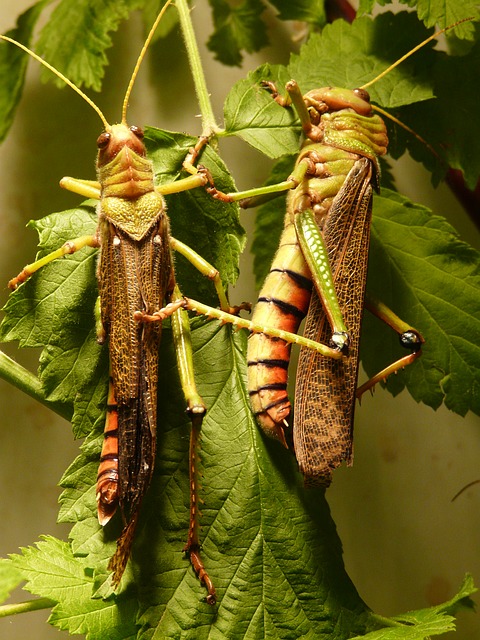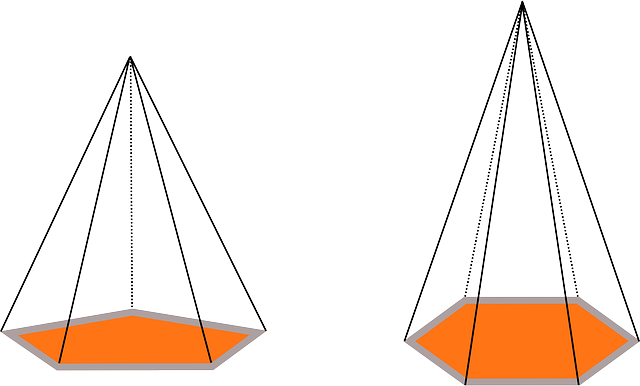مطبخ مسلمي الصين
نطقب:Cuisine of China Cuisine of Chinese Muslims (الصينية التقليدية: 淸眞菜; پنين: Qīngzhēn cài; حرفياً "Ḥalāl cuisine", Dungan: Чыңжән цаы or الصينية التقليدية: 回族菜; پنين: Huízú cài; حرفياً "Hui people's cuisine", Dungan: Ҳуэйзў цаы) is the cuisine of the Hui (ethnic Chinese Muslims) and other Muslims living in China such as Bonan, Dongxiang, Salar and Uyghurs as well as Dungans of Central Asia.
|
الإسلام في الصين |
| تاريخ الإسلام في الصين |
|
تاريخ |
| العمارة |
|
مساجد صينية |
| الشخصيات الرئيسية |
|
• • |
| الجماعات العرقية |
|
هوي • • ويغور |
| المدن والمناطق الإسلامية |
|
• |
| الثقافة |
|
الجمعية الإسلامية للصين |
History
Due to the large Muslim population in Western China, many Chinese restaurants cater to or are run by, Muslims. Northern Chinese Islamic cuisine originated in China proper. It is heavily influenced by Beijing cuisine, with nearly all cooking methods identical, and differs only in material due to religious restrictions. As a result, northern Islamic cuisine is often included in home Beijing cuisine though seldom in east coast restaurants.
During the Yuan dynasty, halal methods of slaughtering animals and preparing food was banned and forbidden by the Mongol emperors, starting with Genghis Khan who banned Muslims and Jews from slaughtering their animals their own way and made them follow the Mongol method.
Among all the [subject] alien peoples only the Hui-hui say “we do not eat Mongol food”. [Cinggis Qa’an replied:] “By the aid of heaven we have pacified you; you are our slaves. Yet you do not eat our food or drink. How can this be right?” He thereupon made them eat. “If you slaughter sheep, you will be considered guilty of a crime.” He issued a regulation to that effect ... [In 1279/1280 under Qubilai] all the Muslims say: “if someone else slaughters [the animal] we do not eat”. Because the poor people are upset by this, from now on, Musuluman [Muslim] Huihui and Zhuhu [Jewish] Huihui, no matter who kills [the animal] will eat [it] and must cease slaughtering sheep themselves, and cease the rite of circumcision.
Traditionally, there is a distinction between northern and southern Chinese Islamic cuisine despite both using mutton and lamb. Northern Chinese Islamic cuisine relies heavily on beef, but rarely ducks, geese, shrimp or seafood, while southern Islamic cuisine is the reverse. The reason for this difference is due to availability of the ingredients. Oxen have been long used for farming and Chinese governments have frequently strictly prohibited the slaughter of oxen for food. However, due to the geographic proximity of the northern part of China to minority-dominated regions that were not subjected to such restrictions, beef could be easily purchased and transported to northern China. At the same time, ducks, geese, and shrimp are rare in comparison to southern China due to the arid climate of northern China.
A Chinese Islamic restaurant (الصينية التقليدية: 淸眞菜館; پنين: qīngzhēn càiguǎn) can be similar to a Mandarin restaurant with the exception that there is no pork on the menu and is[] primarily noodle/soup based.
In most major eastern cities in China, there are very limited Islamic/Halal restaurants, which are typically run by migrants from Western China (e.g., Uyghurs). They primarily offer inexpensive noodle soups only. These restaurants are typically decorated with Islamic motifs such as pictures of Islamic rugs and Arabic writing.
Another difference is that lamb and mutton dishes are more commonly available than in other Chinese restaurants, due to the greater prevalence of these meats in the cuisine of western Chinese regions. (Refer to image 1.)
Other Muslim ethnic minorities like the Salar, Dongxiang, Bonan, and Tibetan Muslims have their own cuisines as well. Dongxiang people operate their own restaurants serving their cuisine.
Many cafeterias (canteens) at Chinese universities have separate sections or dining areas for Muslim students (Hui or western Chinese minorities), typically labeled "qingzhen." Student ID cards sometimes indicate whether a student is Muslim and will allow access to these dining areas or will allow access on special occasions such as the Eid feast following Ramadan.
Several Hui restaurants serving Chinese Islamic cuisine exist in Los Angeles.San Francisco, despite its huge number of Chinese restaurants, appears to have only one whose cuisine would qualify as halal.
Many Chinese Hui Muslims who moved from Yunnan to Burma (Myanmar) are known as Panthays operate restaurants and stalls serving Chinese Islamic cuisine such as noodles. Chinese Hui Muslims from Yunnan who moved to Thailand are known as Chin Haw, and they also own restaurants and stalls serving Chinese Islamic food.
In Central Asia, Dungan people, descendants of Hui, operate restaurants serving Chinese Islamic cuisine which is respectively referred to as Dungan cuisine there. They cater to Chinese businessmen. Chopsticks are used by Dungans. The cuisine of the Dungan resembles northwestern Chinese cuisine.
Most Chinese regard Hui halal food as cleaner than food made by non Muslims so their restaurants are popular in China. Hui who migrated to Northeast China (Manchuria) after the Chuang Guandong opened many new inns and restaurants to cater to travelers, which were regarded as clean.
The Hui who migrated to Taiwan operate Qingzhen restaurants and stalls serving Chinese Islamic cuisine in Taipei and other big cities.
The Thai Department of Export Promotion claims that "China's halal food producers are small-scale entrepreneurs whose products have little value added and lack branding and technology to push their goods to international standards" to encourage Thai private sector halal producers to market their products in China.
A 1903 started franchise which serves Muslim food is Dong Lai Shun in Hankou.
400 meters have to be kept as a distance from each restaurant serving beef noodles to another of its type if they belong to Hui Muslims, since Hui have a pact between each other in Ningxia, Gansu, and Shaanxi.
Halal restaurants are checked up upon by clerics from mosques.
Halal food manufacture has been sanctioned by the government of the Ningxia Autonomous region.
Famous dishes
Lamian
Lamian (Refer to image 2) (الصينية المبسطة: 拉面; الصينية التقليدية: 拉麪; پنين: lāmiàn, Dungan: Ламян) is a Chinese dish of hand-made noodles, usually served in a beef or mutton-flavored soup (湯麪, даңмян tāngmiàn), but sometimes stir-fried (炒麪, Чаомян chǎomiàn) and served with a tomato-based sauce. Literally, 拉, ла (lā) means to pull or stretch, while 麪, мян (miàn) means noodle. The hand-making process involves taking a lump of dough and repeatedly stretching it to produce a single very long noodle.
Words that begin with L are not native to Turkic — läghmän is a loanword as stated by Uyghur linguist Abdlikim: It is of Chinese derivation and not originally Uyghur.
Beef noodle soup
Beef noodle soup (Refer to image 2) is a noodle soup dish composed of stewed beef, beef broth, vegetables and wheat noodles. It exists in various forms throughout East and Southeast Asia. The most common Vietnamese version is called Bo kho but uses rice noodles. It was created by the Hui people during the Tang dynasty of China.
In the west, this food may be served in a small portion as a soup. In China, a large bowl of it is often taken as a whole meal with or without any side dish.
Chuanr
Chuanr (Chinese: 串儿, Dungan: Чўанр, Pinyin: chuànr (shortened from "chuan er"), "kebab"), originating in the Xinjiang (新疆) province of China and in recent years has been disseminated throughout the rest of that country, most notably in Beijing. It is a product of the Chinese Islamic cuisine of the Uyghur (维吾尔) people and other Chinese Muslims. Yang rou chuan or lamb kebabs, is particularly popular.
Suan cai
Suan cai is a traditional fermented vegetable dish, similar to Korean kimchi and German sauerkraut, used in a variety of ways. It consists of pickled Chinese cabbage. Suan cai is a unique form of pao cai due to the material used and the method of production. Although suan cai is not exclusive to Chinese Islamic cuisine, it is used in Chinese Islamic cuisine to top off noodle soups, especially beef noodle soup.
Nang
Nang (Chinese: 馕, Dungan: Нәң) is a type of round unleavened bread, topped with sesame. It is similar to South and Central Asia naan.
Image gallery
- Beef noodle.JPG
Beef noodle served
- Peking Duck.jpg
Peking Duck served at a halal restaurant in Beijing
- 5658-Linxia-City-niang-pi.jpg
Niang pi (酿皮, Няң пы), a popular noodle cold dish in Linxia
See also
- Chinese cuisine
- Iranian cuisine
- Kazakh cuisine
- Turkish cuisine
- Islam in China
- Xinjiang cuisine
- Dali City
- Gansu
- Kunming
- Lanzhou
- Ningxia
- Qinghai
- Shaanxi
- Xi'an
- Yunnan
References
- ^ Michael Dillon (1999). . Richmond: Curzon Press. p. 24. ISBN . Retrieved 2010-06-28.
- ^ Johan Elverskog (2010). (illustrated ed.). University of Pennsylvania Press. p. 228. ISBN . Retrieved 2010-06-28.
- ^ Donald Daniel Leslie (1998). "The Integration of Religious Minorities in China: The Case of Chinese Muslims" (PDF). The Fifty-ninth George Ernest Morrison Lecture in Ethnology. p. 12. Archived from the original (PDF) on 17 December 2010. Retrieved 30 November 2010..
- ^ Dru C. Gladney (2004). . University of Chicago Press. p. 188. ISBN . Retrieved 2010-11-28.
- ^ Dru C. Gladney (1996). . Harvard Univ Asia Center. p. 11. ISBN . Retrieved 2010-11-28.
- ^ David Trilling (April 20, 2010). "Kyrgyzstan Eats: A Dungan Feast in Naryn". EURASIANET.org.
- ^ Barbara A. West (1994). . Greenwood Publishing Group. p. 204. ISBN . Retrieved 2011-01-01.
- ^ Svetlana Rimsky-Korsakoff Dyer (1979). . Faculty of Asian Studies, ANU. p. 62. ISBN . Retrieved 2011-01-01.
- ^ Ḥevrah ha-Mizraḥit ha-Yiśreʾelit (1983). . Jerusalem Academic Press. p. 338. Retrieved 2011-01-01.
- ^ Morris Rossabi (2005). . University of Washington Press. p. 32. ISBN . Retrieved 2011-04-09.
- ^ "Saudi Aramco World: Islam in Taiwan". saudiaramcoworld.com. Archived from the original on 2014-09-11. Retrieved 2014-05-07.
- ^ "Archived copy" (PDF). Archived from the original (PDF) on 2010-01-14. Retrieved 2014-11-11.CS1 maint: archived copy as title (link)
- ^ MCOT online news (May 17, 2011). "Thai private sector urged to penetrate China's halal market". MCOT online news. Archived from the original on May 20, 2011. Retrieved 2010-11-28.
- ^ David Leffman; Simon Lewis; Jeremy Atiyah (2003). . Rough Guides. pp. 540–. ISBN .
- ^ Guo, Diandian; Koetse, Manya (July 24, 2016). ". What's on Weibo.
- ^ ". BBC. 25 July 2016.
- ^ Florence Bergeaud-Blackler; Johan Fischer; John Lever (16 July 2015). . Routledge. pp. 169–. ISBN .
- ^ Pl Nyri; Danielle Tan (27 November 2016). . University of Washington Press. pp. 60–. ISBN .
- ^ "Kyrgyzstan Eats: A Dungan Feast in Naryn". Eurasianet.org. Retrieved 17 October 2018.
- ^ Ildikó Bellér-Hann (2007). . Ashgate Publishing, Ltd. pp. 192–193. ISBN .
- ^ . The White Horse Press for the Mongolia and Inner Asia Studies Unit at the University of Cambridge. 2000. p. 235.
- ^ Q. Edward Wang (26 January 2015). . Cambridge University Press. pp. 55–. ISBN .
- ^ Andrea Lynn (30 September 2014). . St. Martin's Press. pp. –. ISBN .
- ^ Fuchs Christian; Lars Johanson; Éva Ágnes Csató Johanson (29 April 2015). . Routledge. pp. 204–. ISBN .
- ^ Martine Robbeets (24 July 2015). . De Gruyter. pp. 224–. ISBN .
- ^ Mark Janse; Sijmen Tol (1 January 2003). . John Benjamins Publishing. pp. 93–. ISBN .
- ^ Alexander Lubotsky; J. Schaeken; Jeroen Wiedenhof (January 2008). . Rodopi. pp. 157–. ISBN .
External links
| مشاع الفهم فيه ميديا متعلقة بموضوع Chinese Islamic cuisine. |
- A San Francisco Chronicle article on a Chinese Islamic restaurant in the San Francisco Bay area
- chinaheritagequarterly.org
- The Famous Dungan Noodles or Lyu Mian with Eight Seasoning Dishes![]
- More pictures of the Dungan Cuisine
















